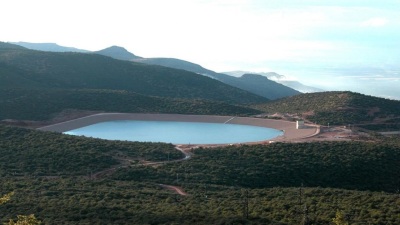
Geomembrane VS Geotextile
Geomembrane
Manufacturing
The raw materials are including 97.5% polymer resin, and various additives carbon black, antioxidants, etc.
Properties
Geomembrane has a small specific gravity, strong elongation, good ductility, corrosion resistance, low heat, and medium frost resistance. Carbon black and other additives are added to the polymer to enhance its resistance to degradation due to exposure to sunlight. The greater thickness will also increase the expected service life.
It has tensile strength and elongation (index, width, axial symmetry, and joint), tear resistance, impact resistance, puncture resistance, interface shear strength, anchorage strength, and stress cracking (constant load and single point).
It also has endurance properties, a polymer degradation process, and ultraviolet radiation.
Applications
Geomembrane is commonly used for seepage prevention.
1. Canals
The geomembrane is used for lining canals to reduce leakage to repair the existing deteriorated concrete lining.
2. Wastewater treatment
Most publicly operated wastewater treatment plants install lagoon liner systems to prevent contaminants from entering groundwater sources or streams.
3. Pond liners
They can also be used in golf courses, amusement parks, resorts, and agriculture & aquaculture applications.
4. Secondary Containment
The tank farm is provided with liners to prevent groundwater pollution when chemicals leak. The secondary containment system can be placed on concrete or directly on the ground.
5. Mining
Geomembrane can improve productive mining. The new heap leaching process using chemical solutions to extract precious metals can be extracted from low-grade ores at a low cost. Geomembrane liners can prevent these chemical solutions from polluting soil and groundwater.
6. Landfills
The main purpose of geomembrane in landfill is to protect groundwater from pollution. Another advantage is that the completed capping makes the land efficient for revegetation and restoration, thus expanding the capacity of the landfill.
Geotextiles
Manufacturing
Usually, they are made from polypropylene or polyester.
Properties
The geotextile has excellent drainage isolation, anti-seepage, and reinforcement performance as well as filtering function. In addition, due to geotextile has the characteristics of lightweight, high tensile strength, air permeability, heat resistance, and frost resistance. Geotextiles are also used because of their high corrosion resistance.
They are toughness, tensile strength, compatibility, flexibility, and tearing strength.
Types
Woven geotextiles have high strengths and low elongations at rupture.
Nonwoven geotextiles are generally thicker than woven products. These geotextiles may be made from continuous filament or staple fibers.
Applications
Geotextiles are usually used to strengthen the foundations, consolidate subsoil, and for anti-filtration purposes.
1. Erosion control
Geotextiles allow water to pass through but resist small soil movements.
2. Separation:
Geotextile can be used as a separator between road subsoil and aggregate layer. This can protect the layer from sinking into the subsoil.
3. Filtration
Geotextiles have become a solution for draining water. It is a filter medium, which can retain the soil particles of backfill materials in the proper position and release the accumulated hydraulic pressure
4. Protection
It also serves as a drainage gallery. It is used in thermal power stations and to treat fly ash in ash ponds, which are made up of impermeable geomembrane layers and geotextiles. It can protect the geomembranes from punching and soil contamination.
5. Drainage
This is the ability of geotextile to discharge liquid by itself, which means that it is not a part of the drainage system, but the drainage system itself.
6. Paving
Geotextiles provide several benefits for paving. It acts as a sandwich for stress relief. It can delay reflection cracks, reduce road maintenance costs and increase road life.







